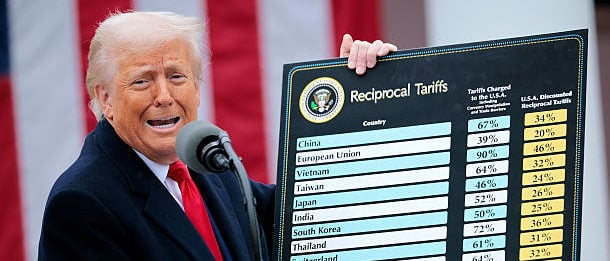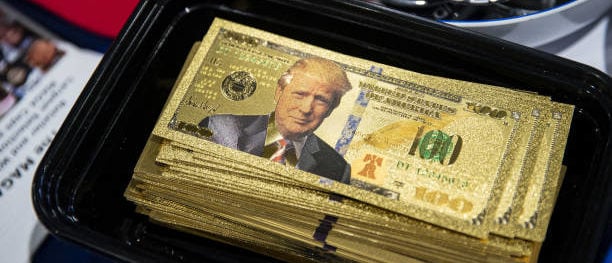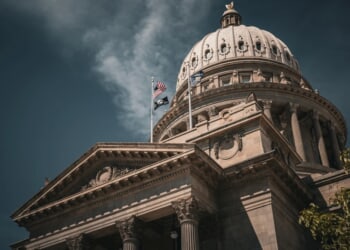U.S. Customs duty collections soared more than 60% in April, marking the highest monthly revenue haul in terms of dollars in American history.
According to newly released Treasury Department data reviewed by Bloomberg, at least $15.4 billion in customs duties and related excise taxes flowed into federal coffers last month, $6 billion more than the month before. This spike in revenue coincides with the first wave of President Donald Trump’s newly implemented tariffs taking effect. Those include a renewed 25% tariff on steel and the “universal” 10% tariff Trump announced on April 2.
Daily collections — payments made at the time goods enter the country — rose nearly 40% in April compared to March.
While the April numbers reflect the 25% increase, it does not account for most of the 10% universal tariffs. May’s total could climb even higher as the full scope of the tariffs kicks in, Bloomberg reports.
Trump has long championed tariffs as a key component of his “America First” economic strategy not only as a way to protect American manufacturers from cheap foreign imports, but to generate revenue.

WASHINGTON, DC – APRIL 02: U.S. President Donald Trump holds up a chart while speaking during a “Make America Wealthy Again” trade announcement event in the Rose Garden at the White House. (Photo by Chip Somodevilla/Getty Images)
Critics in D.C. flatly rejected the idea of tariffs as a legitimate trade strategy, but before the income tax was introduced in 1913, tariffs were the primary way America funded its government. (RELATED: Charles Payne Dunks On Market ‘Experts’ Who He Says ‘Exaggerated’ Gloomy Predictions About Trump’s Tariffs)
Trump has said repeatedly that one of his goals is to reduce reliance on income taxes — and tariff revenue is part of how he plans to do it.
”There is a chance that the money from tariffs could be so great that it would replace (the income tax). You know, in the old days, about 1870 to 1913, the tariffs were the only form of money. And that’s when our nation was relatively the richest. We were the richest,” President Trump told Fox News.
However, $15 billion is a relatively small sum compared with the entirety of the bill the country owes. The national debt is currently more than $36 trillion. During the first half of the fiscal year, Washington racked up a $1.31 trillion deficit.
Economists who have doubted Trump’s trade strategy from the beginning are still not convinced. “If you get to $100 billion to $200 billion, you’ll be pretty lucky,” Mark Zandi, chief economist at Moody’s, told CNBC earlier this month.


![NYC Tourist Helicopter Falls into Hudson River, Siemens Executive and Family Among Those Killed [WATCH]](https://www.right2024.com/wp-content/uploads/2025/04/NYC-Tourist-Helicopter-Falls-into-Hudson-River-Siemens-Executive-and-350x250.jpg)



![Trump’s White House Trolls Illegal Alien Gangs With Hilariously Brutal Video [WATCH]](https://www.right2024.com/wp-content/uploads/2025/03/1742261427_Trumps-White-House-Trolls-Illegal-Alien-Gangs-With-Hilariously-Brutal-350x250.jpg)










